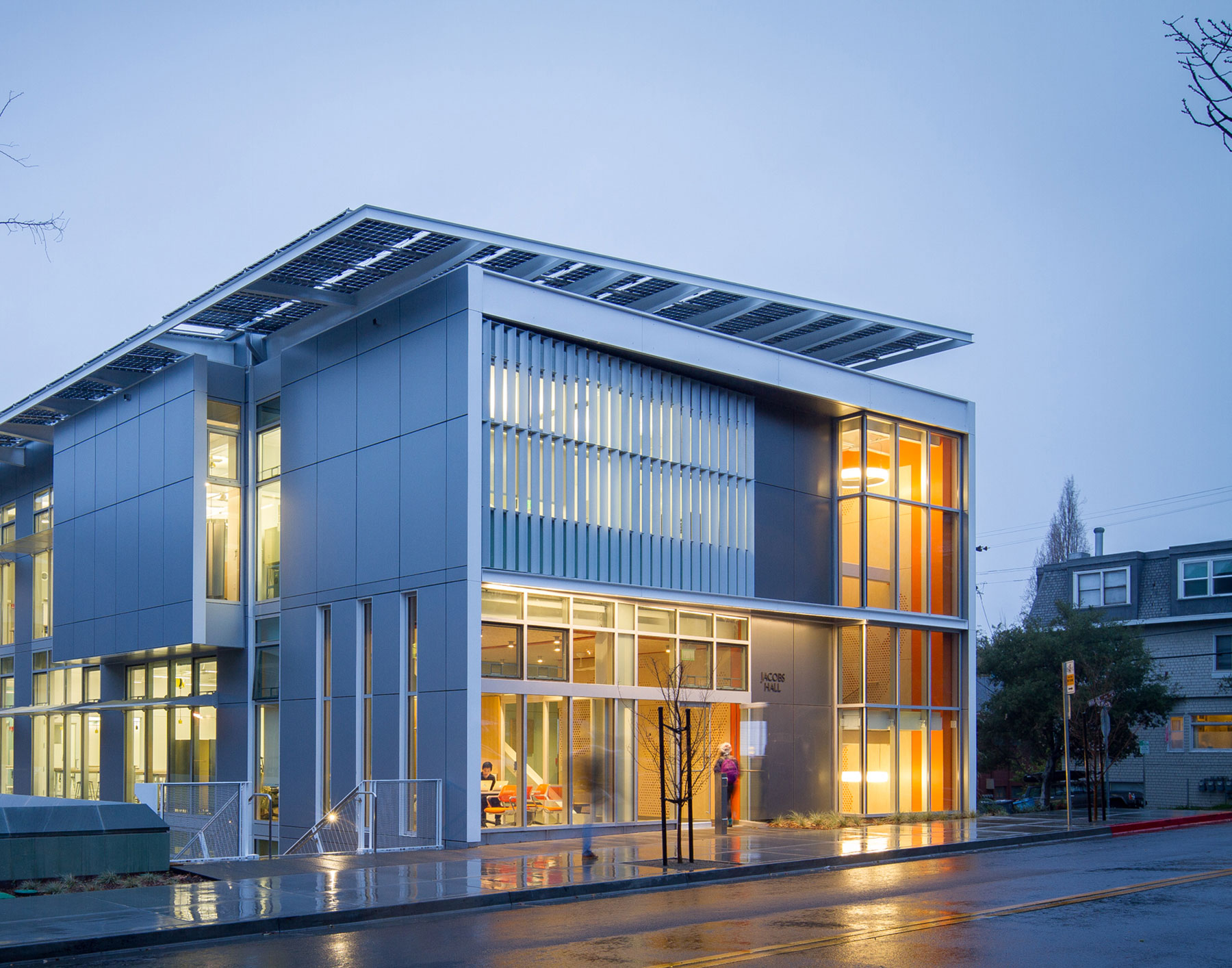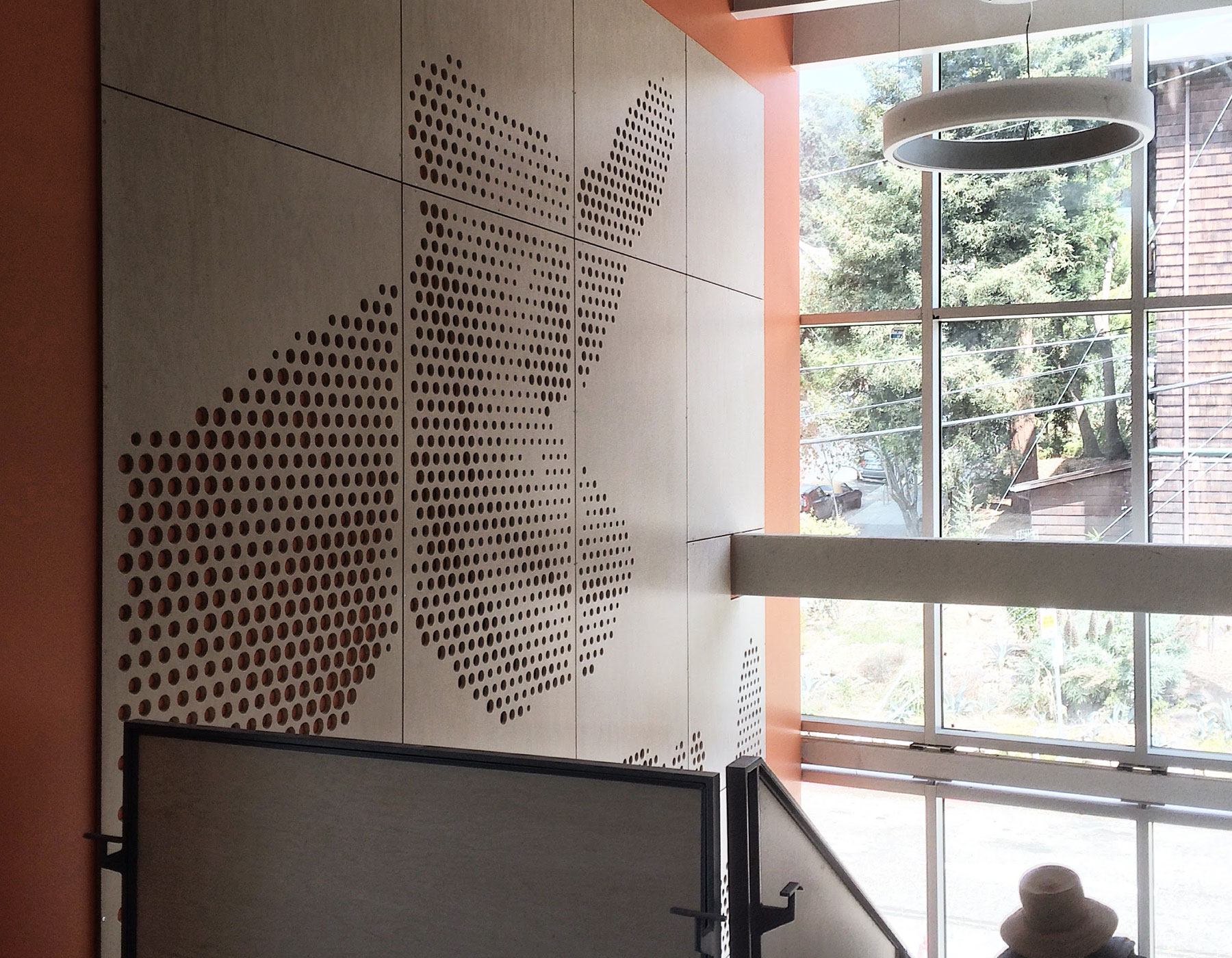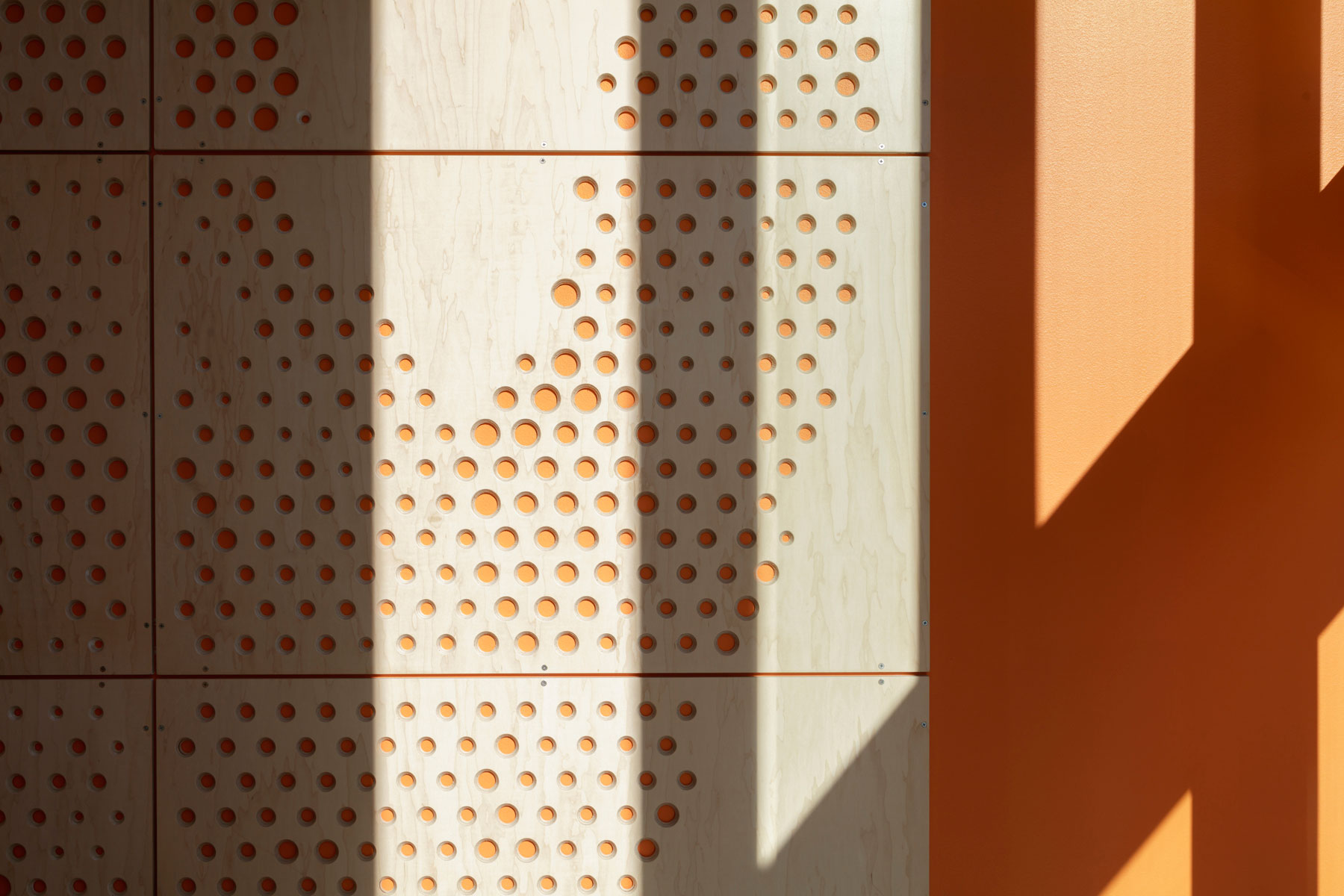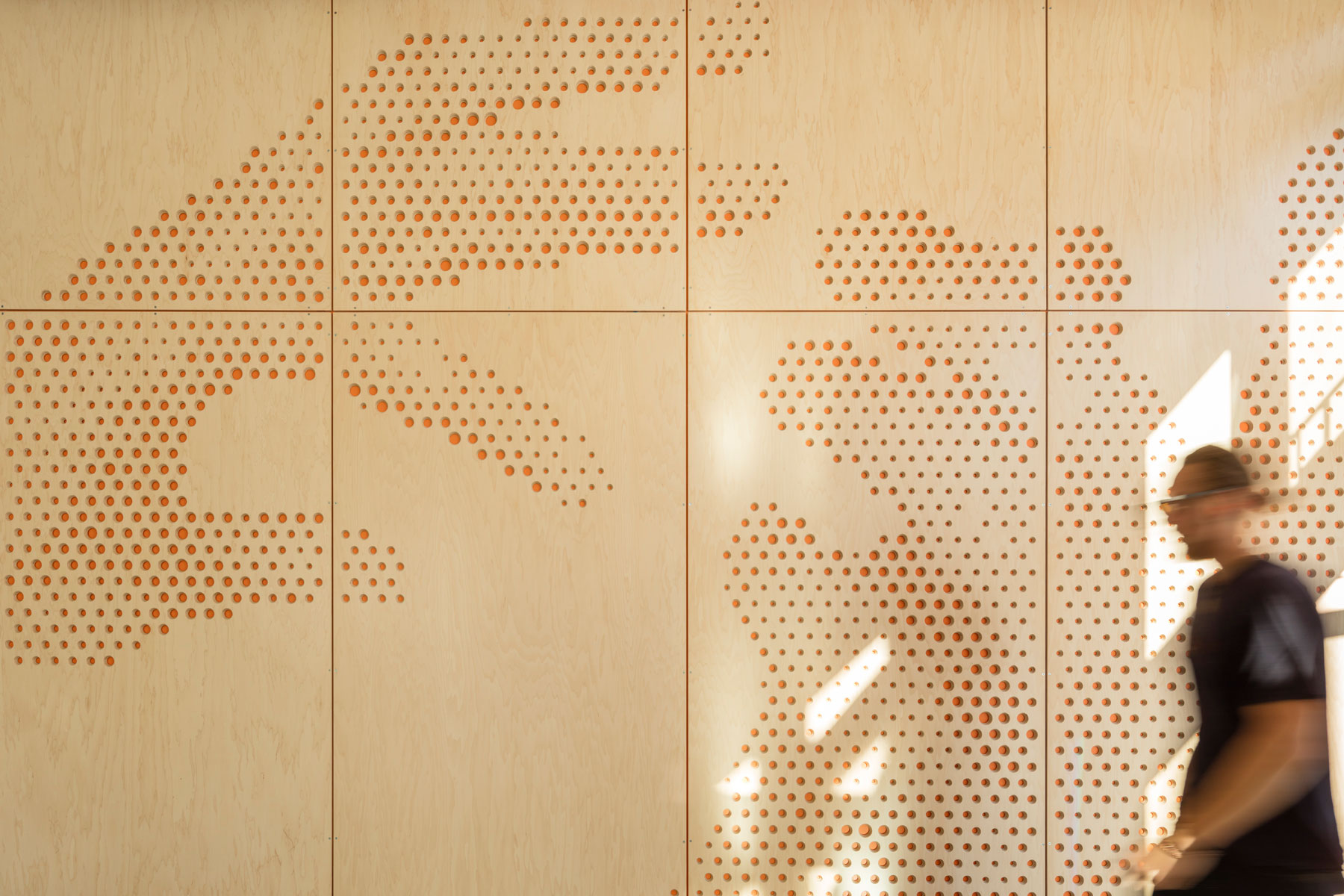
The Jacobs Institute for Design Innovation on UC Berkeley’s campus has been recognized as a model of collaboration and project based learning since the building opened but the innovation process really began while the building was still in design.
Story By
Ryan Jang

When the team was working with the College of Engineering to generate a wall and ceiling finish panel design, we proposed an open design competition across the student body. Not only did this provide an opportunity to further engage the campus community in their new building, it also addressed a challenge of creating a lasting symbol of design innovation.

We collaborated with the College of Engineering to facilitate the competition and received dozens of entries, from which a shortlist of three were selected. Anna Thompson, a student in the Master of Landscape Architecture degree program, submitted the winning entry, Hands. She submitted photographs of the hands of her colleagues and friends as they gesticulated and discussed creative design processes. In her submission, she wrote,
“Hands are the tools of design. We use them to gesture and communicate our ideas as well as to create physical prototypes. They are also the ultimate collaborators, always working in concert with each other. My concept for the Jacobs Hall wall panels is to use hands as an embodiment of these ideas, fabrication, communication, and collaboration.”
The jury noted in selecting Hands that some of the first works of art were prehistoric cave paintings of hands, as illustrated below. The concept was particularly appropriate to a building centered around design thinking and making. The idea that the tactile sense has continued relevance, even in a building with an abundance of digital fabrication tools, serves as a reminder to everyone who enters the building.

The photographs Anna submitted were abstracted and transposed to the plywood panels. Anna, the College of Engineering, a local fabricator, and the design team worked together to develop a custom pixelated pattern of CNC-routed, beveled holes of different sizes on a brightly colored painted substrate. This process was a cooperation across disciplines and iteratively involved many experimental mock-ups, embodying the design thinking ideas now taught across the Institute.

LMSA involves collaboration with a variety of stakeholders and wide community engagement in all of our projects, but the design of the decorative panels took this process to another level. It was an incredible opportunity for the winning student to see her design manifest as a central part of the building, and it showed the client’s and design team's mutually high level of trust to let us go forward with a student design competition.
